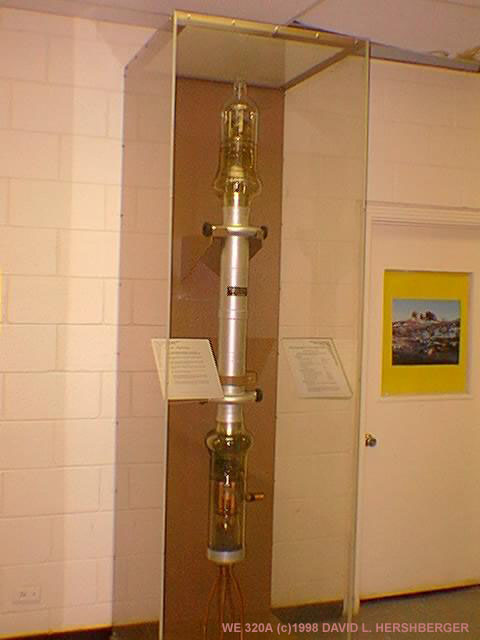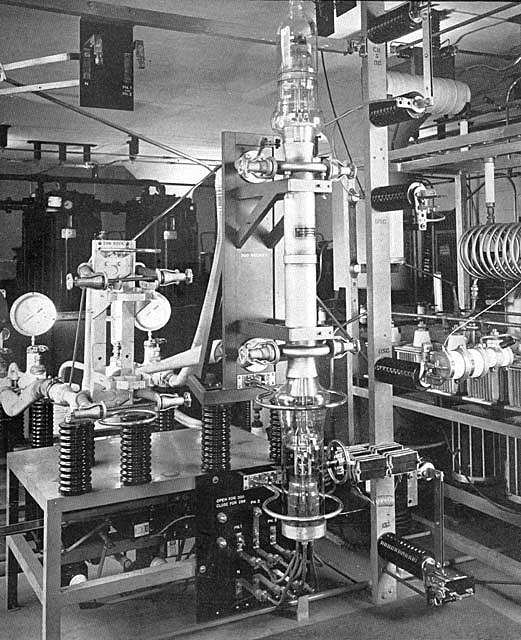Accessed
For inquiries about this page and copyright issues, please visit myFAQ page.
 |
|
ABOUT THE TUBE Doherty tube that is a museum piece in the "high power broadcasting" department at Continental
Electronics in Dallas. This tube was used in a Mexican "border blaster" transmitter built by a predecessor
of Continental in the late 1930s. There were 8 of these tubes used - 4 "carrier" tubes and 4 "peak"
tubes. The total power output was 500 kilowatts, so the station had the same power as WLW. This tube used a "bright tungsten" filament, meaning there was no thorium present to increase electron emission. It took a lot more filament power, but on the other hand, tubes with "bright tungsten" filaments could last almost forever. In the picture, you can see two plaques, one on either side of the tube. One plaque tells the story of the station, and the other plaque is a set of specifications on the tube.
|
|
WESTERN ELECTRIC TYPE 320A
|
| Tube Data Sheet 320A Vacuum Tube The 320A Vacuum tube is a 3 element water cooled tube designed for use as an oscillator, modulator, or amplifier at the higher power levels and high frequencies. Filament ratings: 35 volts at 435 amperes Average thermionic emission: 90 amperes Characteristics at 18 kV plate voltage and 8 amperes plate current: Amplification factor: 30 Plate resistance: 965 ohms Transconductance: 31,100 micromhos Maximum plate ratings: maximum plate voltages: 12.5 kV modulated 18 kV non modulated 20 kV rms AC current: 15 amps DC dissipation: 150 kilowatts Maximum grid dissipation: 2 kilowatts The 320A vacuum tube must be mounted vertically, with the filament terminal end down. A plumb bob should be used for vertical alignment. When a standard socket or mounting is not provided the following mounting suggestions should be adhered to. The tube should be supported from the under side of the upper bulged section of the water jacket. Care must be taken not to deform the water jacket by clamping. |
 |
|
WE-320A Under test a Western Electric Tube in New York 1940 |